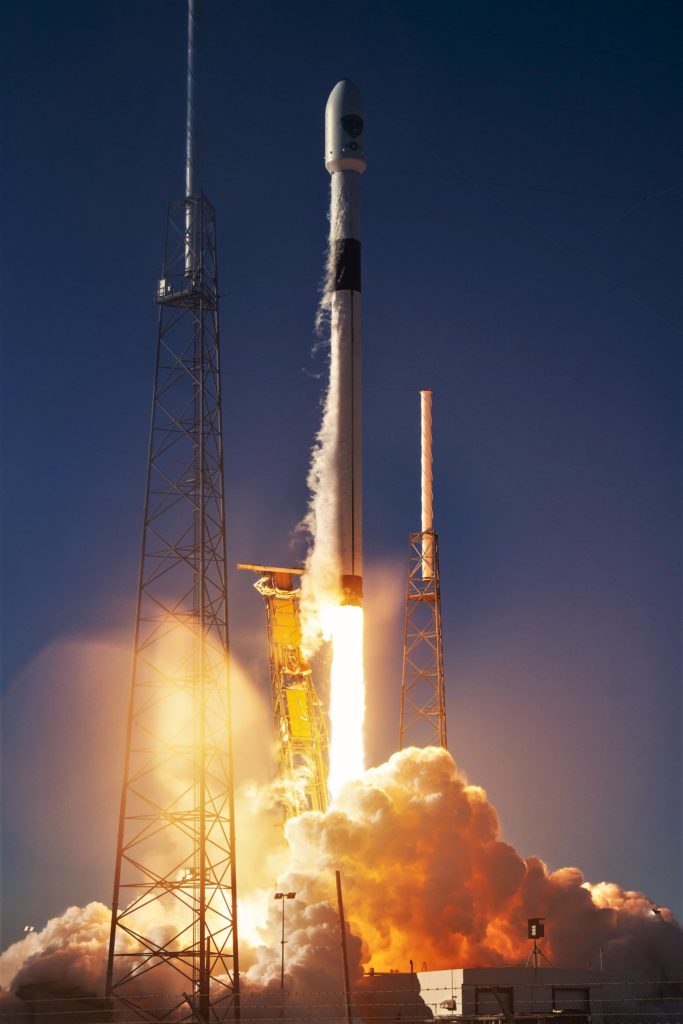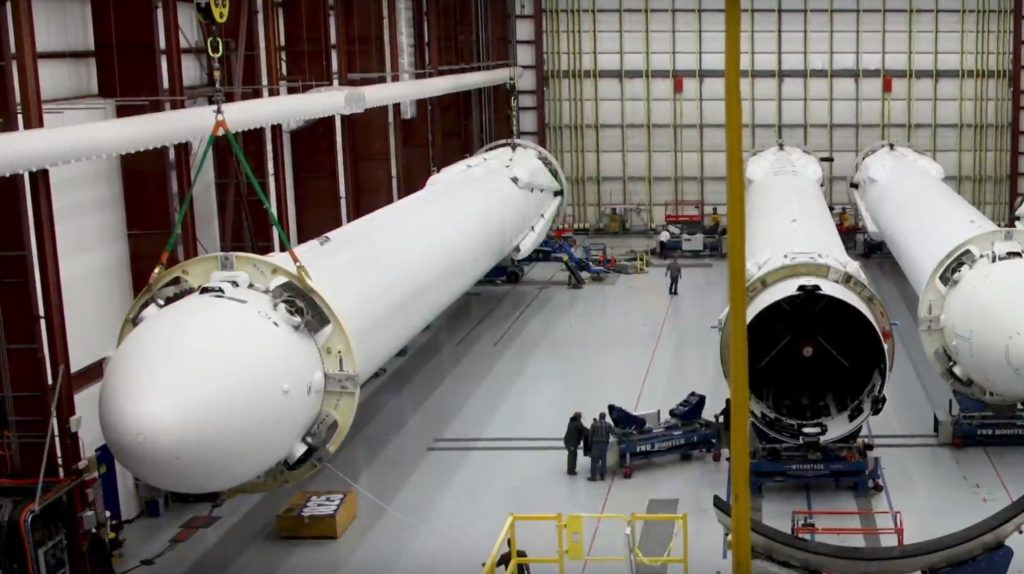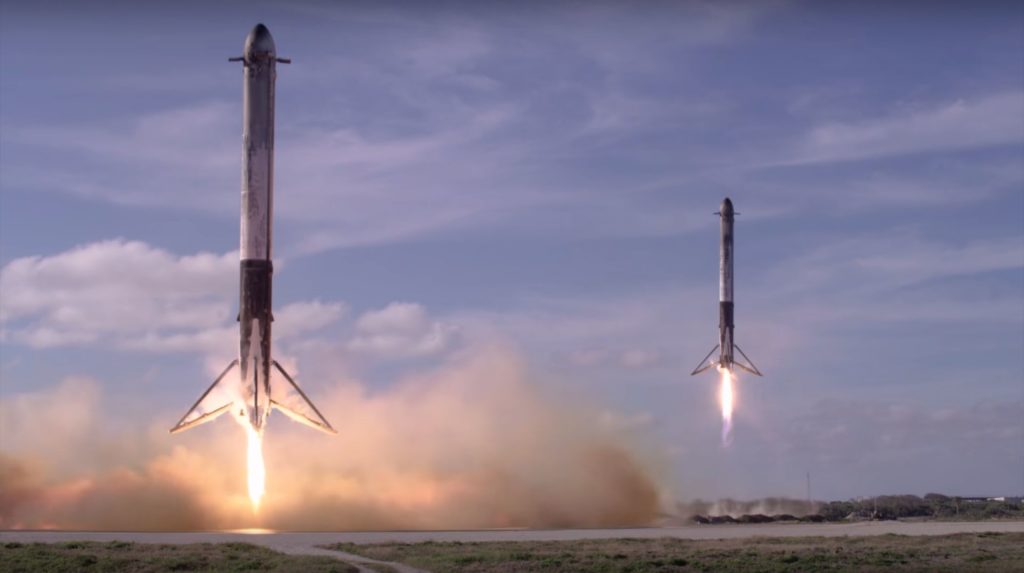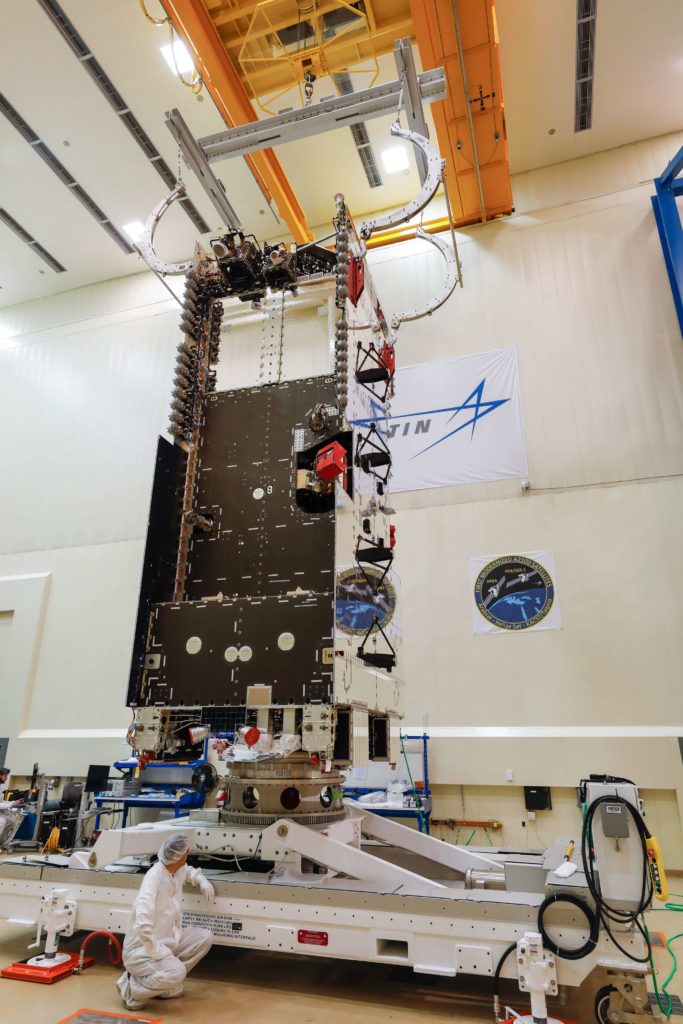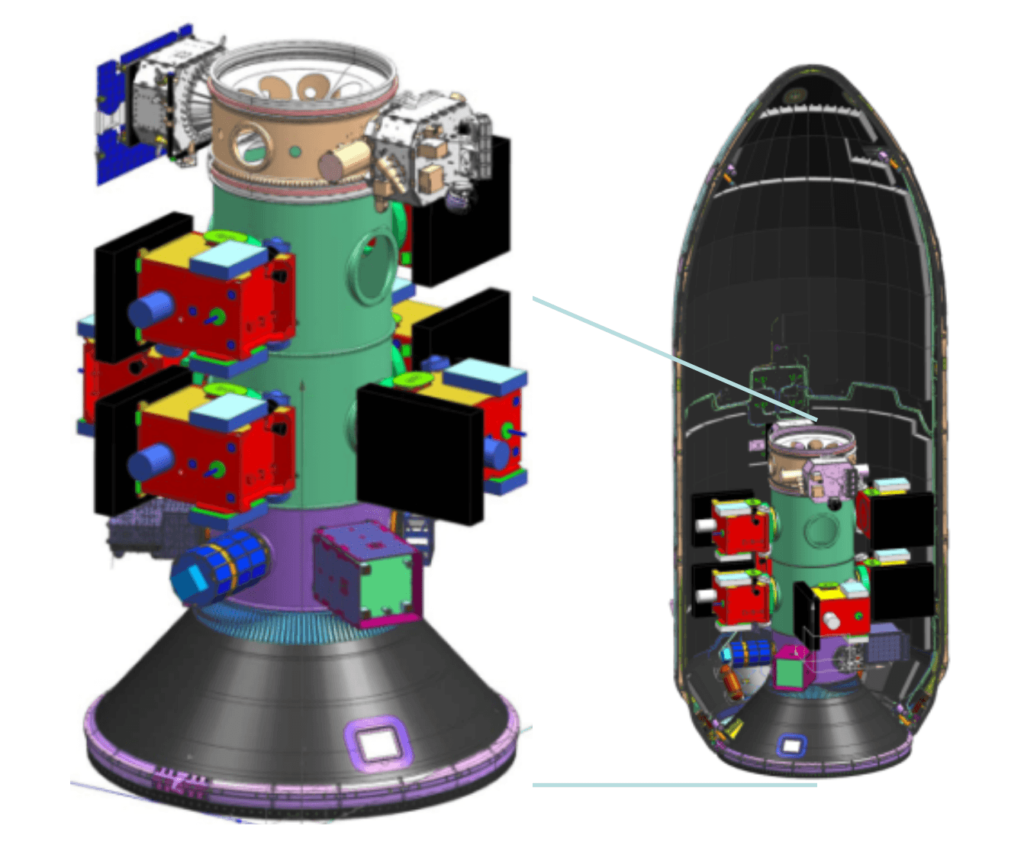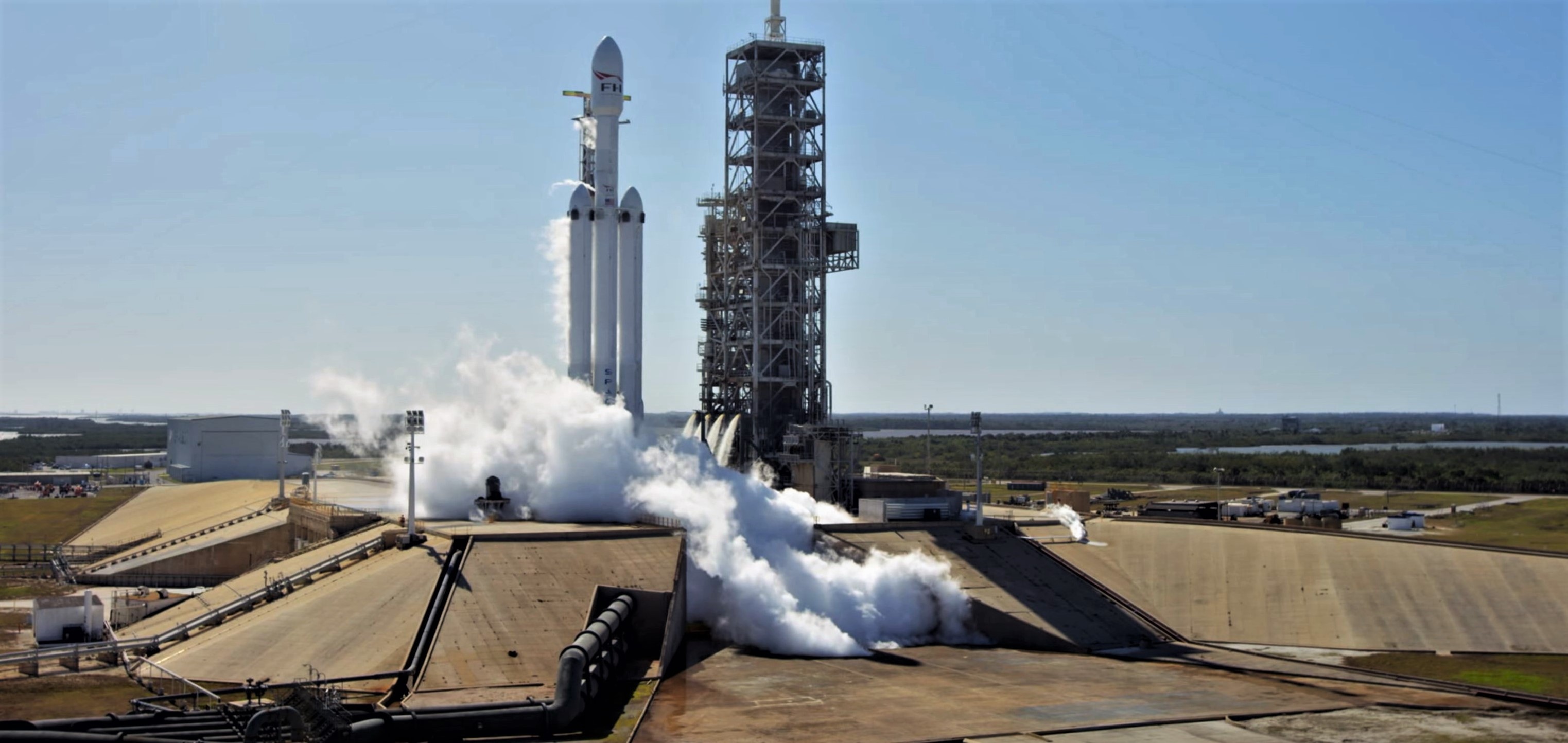

News
SpaceX’s next Falcon Heavy begins to arrive at 39A as center core heads to TX
Approximately a week after a Falcon Heavy side booster – the first of two – arrived at SpaceX’s LC-39A launch complex, a sign of late-stage preparation for the massive rocket’s second and third launches, a Falcon Heavy center stage was spotted rolling through the Waco, Texas locale on its way to SpaceX’s McGregor testing facilities.
Signified by the outlines of unusual bumps under the Falcon booster’s protective shrink wrap, this probable Falcon Heavy center core’s Texas arrival indicates that SpaceX has most likely completed static fire testing of both side boosters, with the second booster now likely to depart McGregor and/or arrive at SpaceX’s Florida facilities in the coming weeks.
The first component of Falcon Heavy Block 5 has arrived at HLC-39A! https://t.co/38spGaCps9
— Thomas Burghardt (@TGMetsFan98) December 22, 2018
In February 2018, Falcon Heavy took flight for the first time ever, bringing to an end an almost mythical series of delays that pushed the rocket’s debut back more than five years. Aside from the unintentional demise of Falcon Heavy Flight 1’s center core, the inaugural launch was a spectacular and technologically valuable success, perfectly verifying the rocket’s ability to safely ignite, launch, separate, and recover two Falcon 9-class boosters simultaneously. SpaceX also took the opportunity – a payload with no practical value aside from inspiration – to perform a successful six-hour coast of the Falcon upper stage, demonstrating a capability critical for many potentially valuable launch contracts.
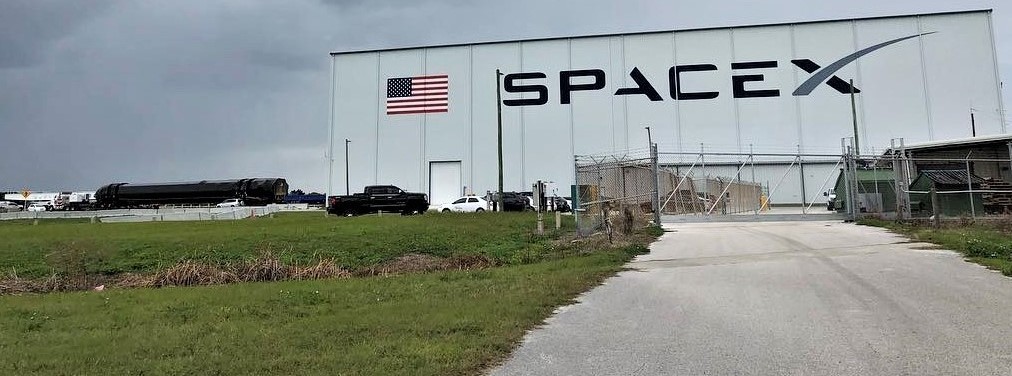
Now verified by planning schedules, SpaceX plans to attempt a truly impressive feat in the first half of 2019. Assuming all goes well during the center booster’s static fire and the subsequent integration and static fire of all three first stages, the company intends to launch the same Falcon Heavy hardware (all three boosters) twice in as little as two months, currently tentatively penciled in for February/March and April 2019.
Surprise sighting of a #SpaceX Falcon 9 rocket booster in my hometown headed a few minutes down the road to the McGregor, TX test site. First time in years seeing a booster in transit “in the wild” like this. 🚀 @elonmusk #falcon9 #falconheavy #STEM #bfr #space pic.twitter.com/daEz4NZPi5
— Abby Garrett (@abbygarrettart) January 1, 2019
Corroborated a few weeks ago by a NASA official involved in one of the payloads that will be present on that planned April launch, SpaceX plans to attempt recovery of both the side boosters and center core and rapidly refurbish them after their first launch in February or March, nominally placing the 6000 kg (~13,200 lb) Arabsat 6A satellite into a high-energy orbit. Perhaps as few as 4-8 weeks later, the rocket will be reintegrated, perform a second static fire at Pad 39A, and launch once again with a USAF rideshare known as Space Test Program (STP) 2, a program specifically designed to allow the Air Force to support low-risk test launches of unproven rockets.
Even more so than the fact that an ~8-week Falcon Heavy turnaround would simultaneously break SpaceX’s previous booster turnaround record in triplicate, the biggest reason to be skeptical of these plans is the fact that this schedule appears to require that the USAF fly a mission on not one but three flight-proven Falcon boosters. This stands at odds with the military branch’s unwillingness (by all appearances) to so much as allow a brand new Falcon 9 enough propellant margin (typically just a few percent) to land itself after the December 23rd launch of GPS III SV01, let alone allow their satellites to ride on a previously-flown rocket.
- Falcon Heavy is composed of a Falcon 9 upper stage and three Falcon 9-class boosters. (SpaceX)
- Falcon Heavy’s simultaneous side booster recovery. This will likely be repeated for both Arabsat 6A and STP-2. (SpaceX)
- The communications satellite Arabsat-6A. (Lockheed Martin)
- The USAF’s STP-2, a combination of a few dozen different satellites. (USAF)
The major wrench in the machine here is the fact that GPS III SV01 most likely cost the USAF upwards of $700M to procure and will ultimately become a critical part of a widespread infrastructural upgrade, whereas STP-2 features two dozen or so small satellites worth dramatically less than the single GPS satellite SpaceX launched last month. STP-2 also operates under a program that is in large part meant to offer opportunities for new or wholly unproven launch vehicles (like Falcon Heavy) to conduct experimental launches, carrying the assumption that certifying those rockets for national security space (NSS) missions would be in the best interests of the Air Force and DoD.
As such, the back-to-back Falcon Heavy launch schedule is by no means impossible despite the fact that it offers up many reasons to doubt its plausibility. Either way, the fact that the next Falcon Heavy’s center core has already left SpaceX’s Hawthorne factory – following in the footsteps of two new side boosters – is a nearly unequivocal sign that the rocket’s second launch rapidly approaching.
For prompt updates, on-the-ground perspectives, and unique glimpses of SpaceX’s rocket recovery fleet check out our brand new LaunchPad and LandingZone newsletters!
News
These Tesla, X, and xAI engineers were just poached by OpenAI
The news is the latest in an ongoing feud between Elon Musk and the Sam Altman-run firm OpenAI.
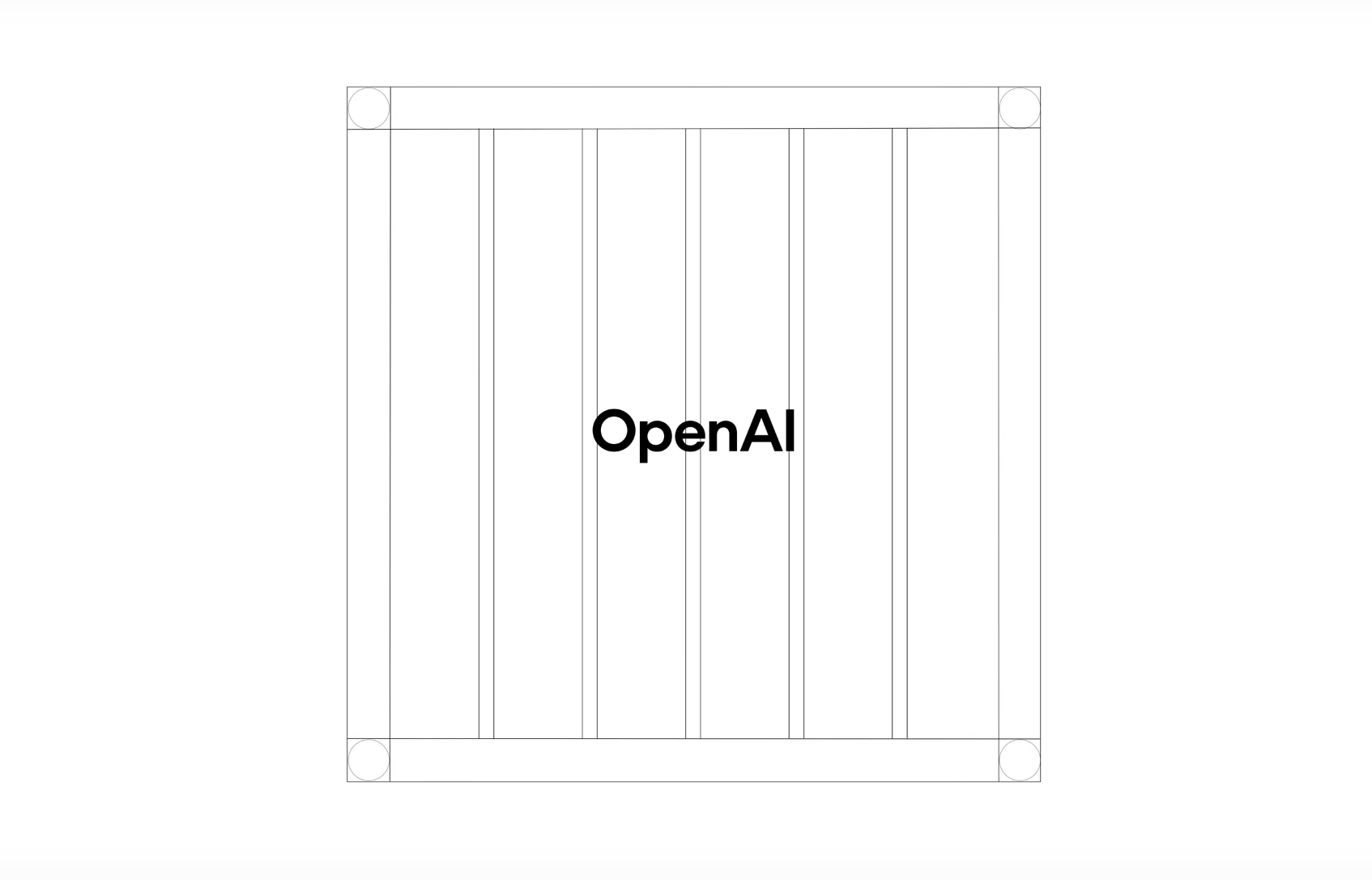
OpenAI, the xAI competitor for which Elon Musk previously served as a boardmember and helped to co-found, has reportedly poached high-level engineers from Tesla, along with others from xAI, X, and still others.
On Tuesday, Wired reported that OpenAI hired four high-level engineers from Tesla, xAI, and X, as seen in an internal Slack message sent by co-founder Greg Brockman. The engineers include Tesla Vice President of Software Engineering David Lau, X and xAI’s head of infrastructure engineering Uday Ruddarraju, and fellow xAI infrastructure engineer Mike Dalton. The hiring spree also included Angela Fan, an AI researcher from Meta.
“We’re excited to welcome these new members to our scaling team,” said Hannah Wong, an OpenAI spokesperson. “Our approach is to continue building and bringing together world-class infrastructure, research, and product teams to accelerate our mission and deliver the benefits of AI to hundreds of millions of people.”
Lau has been in his position as Tesla’s VP of Software Engineering since 2017, after previously working for the company’s firmware, platforms, and system integration divisions.
“It has become incredibly clear to me that accelerating progress towards safe, well-aligned artificial general intelligence is the most rewarding mission I could imagine for the next chapter of my career,” Lau said in a statement to Wired.
🚨Optimistic projections point to xAI possibly attaining profitability by 2027, according to Bloomberg's sources.
If accurate, this would be quite a feat for xAI. OpenAI, its biggest rival, is still looking at 2029 as the year it could become cash flow positive.💰 https://t.co/pE5Z9daez8
— TESLARATI (@Teslarati) June 18, 2025
READ MORE ON OPENAI: Elon Musk’s OpenAI lawsuit clears hurdle as trial looms
At xAI, Ruddarraju and Dalton both played a large role in developing the Colossus supercomputer, which is comprised of over 200,000 GPUs. One of the major ongoing projects at OpenAI is the company’s Stargate program,
“Infrastructure is where research meets reality, and OpenAI has already demonstrated this successfully,” Ruddarraju told Wired in another statement. “Stargate, in particular, is an infrastructure moonshot that perfectly matches the ambitious, systems-level challenges I love taking on.”
Elon Musk is currently in the process of suing OpenAI for shifting toward a for-profit model, as well as for accepting an investment of billions of dollars from Microsoft. OpenAI retaliated with a counterlawsuit, in which it alleges that Musk is interfering with the company’s business and engaging in unfair competition practices.
Elon Musk confirms Grok 4 launch on July 9 with livestream event
News
SpaceX share sale expected to back $400 billion valuation
The new SpaceX valuation would represent yet another record-high as far as privately-held companies in the U.S. go.
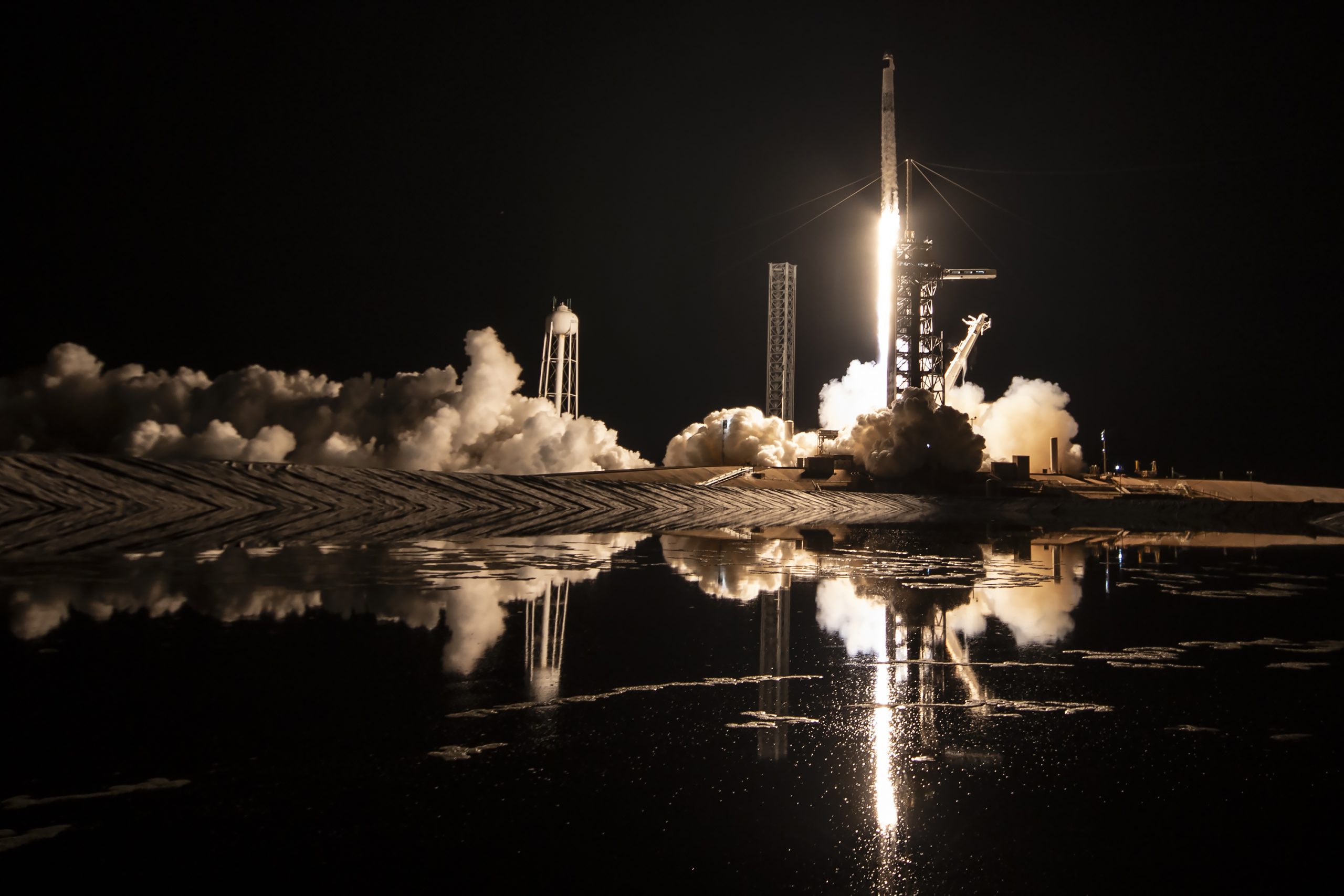
A new report this week suggests that Elon Musk-led rocket company SpaceX is considering an insider share sale that would value the company at $400 billion.
SpaceX is set to launch a primary fundraising round and sell a small number of new shares to investors, according to the report from Bloomberg, which cited people familiar with the matter who asked to remain anonymous due to the information not yet being public. Additionally, the company would sell shares from employees and early investors in a follow-up round, while the primary round would determine the price for the secondary round.
The valuation would represent the largest in history from a privately-owned company in the U.S., surpassing SpaceX’s previous record of $350 billion after a share buyback in December. Rivaling company valuations include ByteDance, the parent company of TikTok, as well as OpenAI.
Bloomberg went on to say that a SpaceX representative didn’t respond to a request for comment at the time of publishing. The publication also notes that the details of such a deal could still change, especially depending on interest from the insider sellers and share buyers.
Axiom’s Ax-4 astronauts arriving to the ISS! https://t.co/WQtTODaYfj
— TESLARATI (@Teslarati) June 26, 2025
READ MORE ON SPACEX: SpaceX to decommission Dragon spacecraft in response to Pres. Trump war of words with Elon Musk
SpaceX’s valuation comes from a few different key factors, especially including the continued expansion of the company’s Starlink satellite internet company. According to the report, Starlink accounts for over half of the company’s yearly revenue. Meanwhile, the company produced its 10 millionth Starlink kit last month.
The company also continues to develop its Starship reusable rocket program, despite the company experiencing an explosion of the rocket on the test stand in Texas last month.
The company has also launched payloads for a number of companies and government contracts. In recent weeks, SpaceX launched Axiom’s Ax-4 mission, sending four astronauts to the International Space Station (ISS) for a 14-day stay to work on around 60 scientific experiments. The mission was launched using the SpaceX Falcon 9 rocket and a new Crew Dragon capsule, while the research is expected to span a range of fields including biology, material and physical sciences, and demonstrations of specialized technology.
News
Tesla Giga Texas continues to pile up with Cybercab castings
Tesla sure is gathering a lot of Cybercab components around the Giga Texas complex.
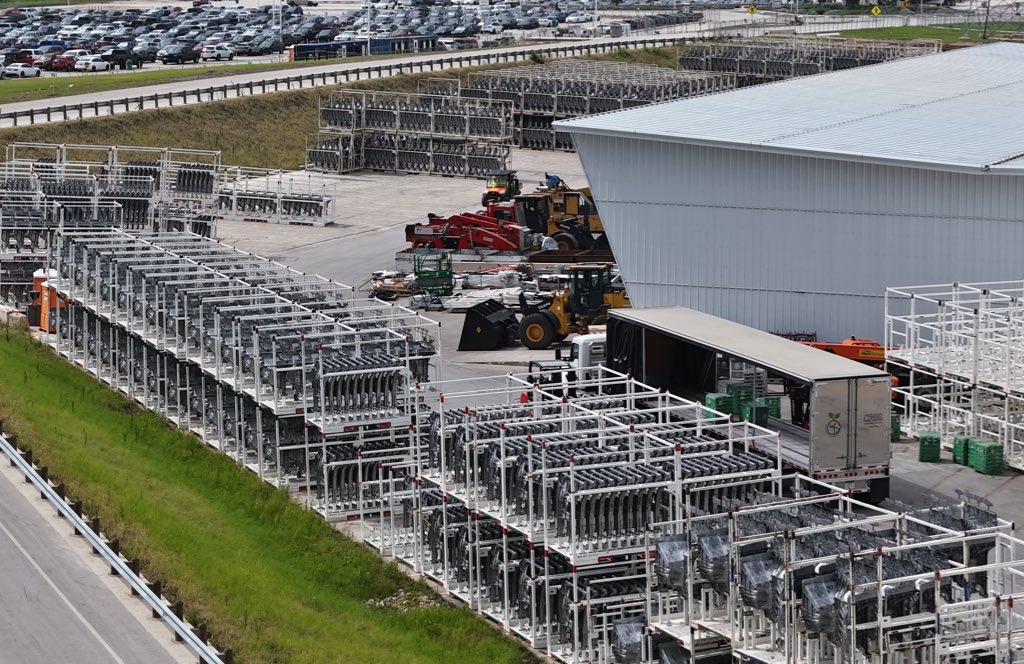
Tesla may be extremely tight-lipped about the new affordable models that it was expected to start producing in the first half of the year, but the company sure is gathering a lot of Cybercab castings around the Giga Texas complex. This is, at least, as per recent images taken of the facility.
Cybercab castings galore
As per longtime drone operator Joe Tegtmeyer, who has been chronicling the developments around the Giga Texas complex for several years now, the electric vehicle maker seems to be gathering hundreds of Cybercab castings around the factory.
Based on observations from industry watchers, the drone operator appears to have captured images of about 180 front and 180 rear Cybercab castings in his recent photos.
Considering the number of castings that were spotted around Giga Texas, it would appear that Tesla may indeed be preparing for the vehicle’s start of trial production sometime later this year. Interestingly enough, large numbers of Cybercab castings have been spotted around the Giga Texas complex in the past few months.
Cybercab production
The Cybercab is expected to be Tesla’s first vehicle that will adopt the company’s “unboxed” process. As per Tesla’s previous update letters, volume production of the Cybercab should start in 2026. So far, prototypes of the Cybercab have been spotted testing around Giga Texas, and expectations are high that the vehicle’s initial trial production should start this year.
With the start of Tesla’s dedicated Robotaxi service around Austin, it might only be a matter of time before the Cybercab starts being tested on public roads as well. When this happens, it would be very difficult to deny the fact that Tesla really does have a safe, working autonomous driving system, and it has the perfect vehicle for it, too.
-

 Elon Musk1 week ago
Elon Musk1 week agoTesla investors will be shocked by Jim Cramer’s latest assessment
-

 News2 weeks ago
News2 weeks agoTesla Robotaxi’s biggest challenge seems to be this one thing
-

 Elon Musk1 day ago
Elon Musk1 day agoElon Musk confirms Grok 4 launch on July 9 with livestream event
-

 News2 weeks ago
News2 weeks agoWatch the first true Tesla Robotaxi intervention by safety monitor
-

 News5 days ago
News5 days agoTesla Model 3 ranks as the safest new car in Europe for 2025, per Euro NCAP tests
-

 Elon Musk2 weeks ago
Elon Musk2 weeks agoA Tesla just delivered itself to a customer autonomously, Elon Musk confirms
-

 Elon Musk2 weeks ago
Elon Musk2 weeks agoElon Musk confirms Tesla Optimus V3 already uses Grok voice AI
-

 Elon Musk2 weeks ago
Elon Musk2 weeks agoxAI welcomes Memphis pollution results, environmental groups push back

